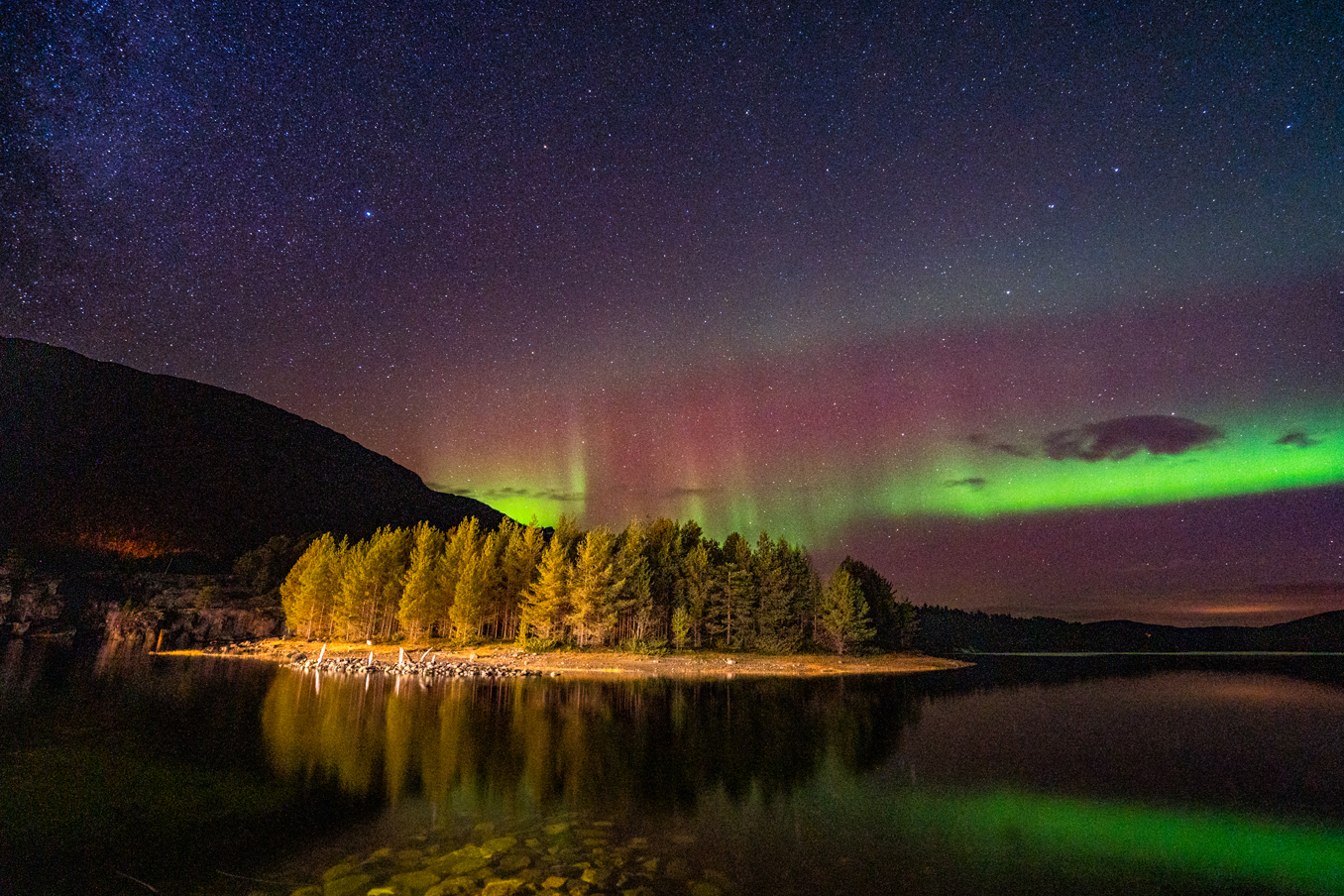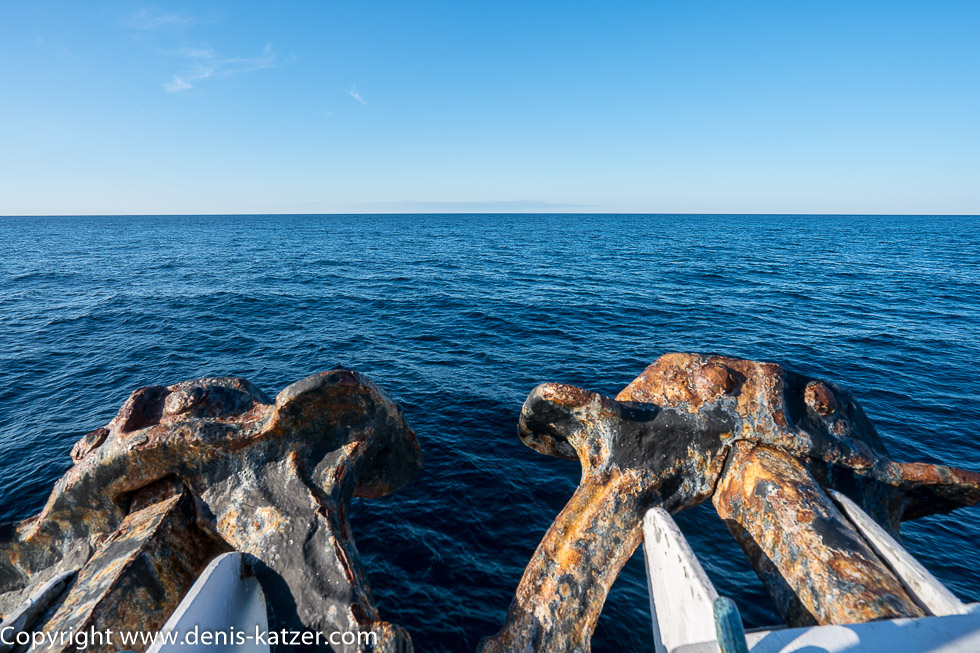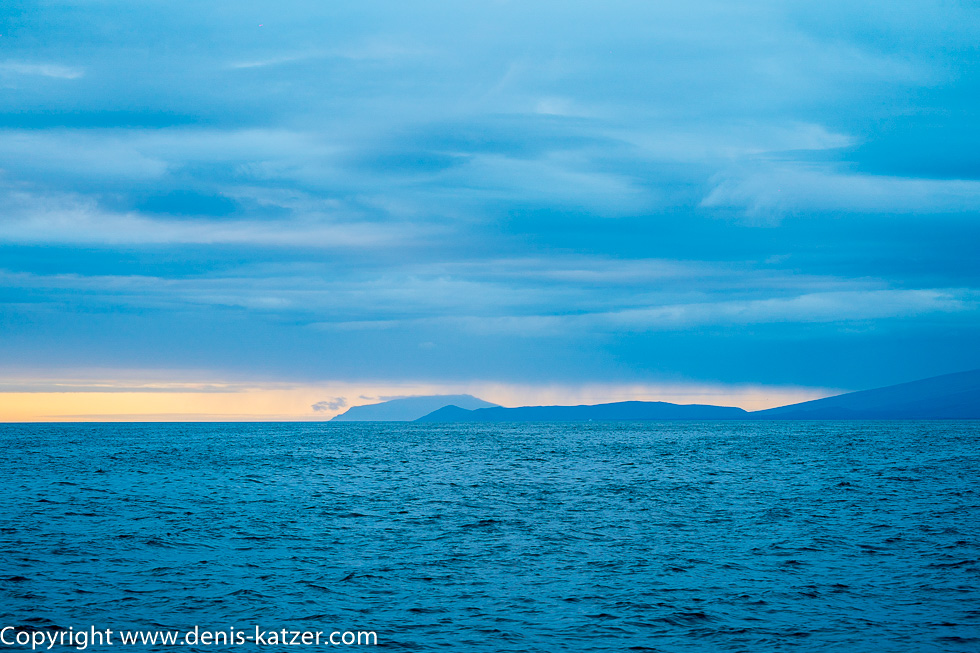
Whaling ship Essex rammed by sperm whale
N 69°19'28.8" E 16°07'05.7"
Date:
03.10.2020
Day: 062
Country:
Norway
Location:
Andenes
Daily kilometers:
0 km
Total kilometers:
5444 km
Soil condition:
Asphalt
Sunrise:
07:11
Sunset:
18:31
Temperature day max:
14°
Night temperature min:
9°
Departure:
10:30
Arrival time:
18:00
(Photos of the diary entry can be found at the end of the text).
Click here for the podcasts!
Link to the current itinerary
(For more posts click on one of the flags in the map)
We parked the Terra Love overnight in the driveway in front of Nathalie and Stefan’s house, so we only have to walk a few meters to get to the house. Nathalie has already set the table. Even though we love having breakfast in our Terra, this morning is a pleasant change. We continue our conversation from last night. “If you want to get to the island of Senja from here, you have to use the road. It’s about 450 kilometers to the Gryllefjord on Senja. The distance from here to the Gryllefjord by ferry is only about 40 kilometers, but unfortunately this connection is only active in summer and has been closed for over a month at this time of year. But if you have time, it doesn’t matter, because the route is beautiful. It’s best to take the road on the west coast. There are hardly any cars on it at this time of year and down in the south of Andøya there is an unpaved section of road. We wanted to drive there with our van, but there are a lot of deep potholes, which is why we didn’t dare to drive our beautiful van there. But that’s no problem with your expedition vehicle,” explains Stefan enthusiastically. “A bit of off-road would be fantastic for a change,” I say happily and have the route shown to me in detail on the map. Then we say goodbye to the two of them. “Thank you again for the invitations and your hospitality,” we say as we leave the Swiss house. “We wish you luck and good health on your adventures. Hope to see you again,” they reply.
We drive back to the campsite at the harbor to use today to write down our experiences, edit the pictures and post a few updates online. As the café above the museum has a good, open Wi-Fi connection, we sit down in the large anteroom. There are a few casual leather armchairs in which we sink down to do our work. “I saw you on the M / S Reine yesterday, didn’t I?” a man of around 80 years of age speaks to us, dressed in a worn, paint-stained overall. “Could be. We went on the whale safari yesterday,’ I reply in a friendly manner. “My name is Fynn,” the white-haired little man introduces himself, his wrinkled face hidden behind a long white beard. “We are Tanja and Denis,” I also introduce myself. “Did you like it?” “Absolutely. It was a great experience. Unfortunately, I felt a bit sick,” I reply. “Oh, I believe that. There were a few waves out there. I couldn’t have afforded seasickness.” “Why not? Did you go to sea?” I ask with interest. “I was a whaler in my younger years and later sailed on merchant ships. I circumnavigated the world many times and spent most of my life out there on the water. I hope you were able to get some of the beasts in front of your lens?” “Beasts?” “Well, they can be sometimes. My ancestors were whale hunters. We made our money from whaling, good money, but it’s not really lucrative anymore. In any case, my family’s life was closely interwoven with whales. My great-grandfather and grandfather, who hunted whales with spears from a small rowing boat, were among the first settlers in America. They passed on their knowledge and stories to their sons. My father hunted whales with a cannon that was installed on the ships and shot harpoons with an explosive charge that exploded in the animal. When I was still a little snot, my grandfather often lifted me onto his lap and told me stories about his and his father’s life. I couldn’t get enough of them back then. So I am a walking book full of true experiences. Haven’t you read about the Essex disaster?” he says, sitting down on the back of my armchair and apparently making himself comfortable for a long time. “Just as an aside,” I reply, closing my laptop and waiting to hear what the old sea dog has to tell us. “Well, the Essex was an American whaling ship that was based in the harbor on the island of Nantucket. The same place where my ancestors lived.” “Natucket?” I ask. “Is an island located about 300 kilometers northeast of New York City in what is now the state of Massachusetts. You should know that in the 1600s there were about 3,000 Indians living on the island. In the 1700s there were still around 800 Indians and when the whaling ship Essex with its wooden hull was built in 1800, most of the indigenous people had already been wiped out by the English settlers. It was the heyday of whaling.” “It’s terrible, the crimes the white man committed against the indigenous population of our planet,” I interrupt. “Yes, that’s true, but I didn’t really want to tell you that, I just wanted to give you a brief overview of where the story of the Essex began. So where did I leave off?” “You were talking about the construction of the Essex and that most of the Indians had already been wiped out by that time.” “Oh yes. Okay. Well, the Essex was a small ocean-going full-rigged ship for the time.” “Sorry, what’s a full-rigged ship?” I interrupt the sailor who has started talking again. “But your husband wants to know everything exactly,” he winks at Tanja, who has long since put her smartphone to one side and is also listening to the story spellbound. “So a full-rigged ship is a tall ship with at most three masts. Accordingly, it was a small but good ship. A 240-ton ship, 28 meters long, 8 meters wide and with a draught of about 5 meters. When she left her home port on Nantucket on August 12, 1819, she already had 19 successful years of whaling under her belt and a crew of 21, including the young 28-year-old captain Georg Pollard. Although Pollard was relatively young, he had served as second and first mate on the Essex for four years from the age of 23, i.e. from 1815 to 1819. In 1819, he was given command by the owners.” “That you can remember all those years is remarkable,” I interrupt again. “Ha, ha, ha. I’ve told that story so many times that it’s literally burned into my brain,” he replies with a laugh and continues his story. “As I said, they set sail on August 12, 1819. The problem, however, was that they had some greenhorns, i.e. men without any experience, on board to complete the crew. Somehow, the whaler was not under a good star from the start, because after just four days they were caught in a strong storm that hit the ship so hard that it broached and rolled to one side. Two of the important whaling dinghies were lost. Somehow, however, they managed to right the badly damaged Essex. Pollard’s accident was probably to blame. At least it was later said that he and his officers had misjudged the situation and perhaps it was partly due to the inexperienced crew. Whatever the case, the Essex was badly damaged, which is why Pollard wanted to sail back to Nantucket. From my point of view, that would certainly have been a good decision, but his first and second officers convinced him to sail on to replace the lost whaling boats on the Portuguese island of Flores. In mid-September, they reached the small desert island of Boa Vista in Cape Verde to buy another rowing boat. In November of the same year, they sailed past the Falkland Islands and in December they rounded the Chilean headland of Cape Horn. A very feared passage at the time.” “I’ve heard about Cape Horn before, but as I’m not a sailor, I don’t know why it’s so dangerous,” I interrupt Fynn. “Oh, Cape Horn has it all. If you had to sail from the Atlantic to the Pacific like the Essex, the constant west wind drift was dangerous for them. They had to constantly cross against the wind in heavy rain, cold and high seas. Added to this was the poor visibility and the danger of hitting one of the barely visible icebergs. Any captain who managed to get his ship through that in one piece is a hero in my book. You should know that today it is estimated that more than 800 ships capsized there and more than 10,000 people sank in the rough waters. This makes Cape Horn the largest ship graveyard in the world. But now I’ll tell you more about the fate of the Essex,” continues Fynn. “Um, where was I again?” “That the Essex rounded Cape Horn,” I say. “Oh yes, of course. So, after sailing safely around the Cape, the Essex reached the Pacific and made several stops in Chilean towns from January to July to stock up on provisions. From June to August, they were successful for the first time, killing 11 whales off the coast of Peru. That was enough to fill 450 barrels with tran. In September, when they had already been traveling for over a year, they resupplied in the small fishing village of Atacames on the Ecuadorian coast, then crossed over to the Galapagos Islands, took more provisions on board in October and set off on the great hunt for sperm whales. And then, on November 20, 1820, in the middle of the Pacific Ocean on the equator, 3,700 kilometers from the South American mainland, the incomprehensible happened. The biggest and most famous accident, in which a sperm whale demonstrably attacked a 240-ton, 28-metre-long sailing ship,” says Fynn and takes a long pause. “And what happens next?” asks Tanja…





